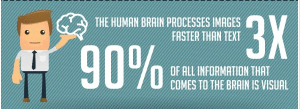Unless you have been living under a rock, you will be aware that content marketing is the key to driving traffic to your business website. From 94% of small businesses to 93% of B2Bs and 77% of B2Cs – including large, well-known brands such as Coca-Cola and Telenor, everyone has finally paid attention to its importance.
It’s safe to say that content marketing is being taken seriously nowadays. However, just because it is the way-to-go, doesn’t mean all businesses are acing it. A report by Content Marketing Institute revealed that only 9% of B2B marketers considered their content marketing efforts to be “effective”.

So where are the businesses lagging behind and what are their content marketers missing out on? Here are 8 reasons your content marketing sucks (and how you can fix it from here on):
8 Reasons Why Your Content Marketing Fails (And How You Can Fix It)
1. Lazy content promotion
It’s called content marketing for a reason. Therefore, once you curate content, it is a must to promote it on different channels. If no one can see your content piece, the purpose of writing it in the first place is defeated!
Promote it on multiple social media platforms such as Facebook, Twitter, Instagram, Google Plus and Pinterest to gain traction. LinkedIn, email newsletters and website banners among others are also fantastic options!
An effective way to gain more shares than your conventional posts is via rich media—images, infographics, slide decks, videos, podcasts, etc. It takes time and patience to create rich media, but it’s worth the effort, and the subsequent results.
Experiment with different types of textual and visual content based on what your prospective customers interact with the most when they’re online. Also, analyze how it will add value to them and to your marketing end goals.
Here’s an interesting infographic we found on Jeff Bullas:

2. Hard niche industry
Most marketers encounter the challenge of having too many competitors in a hard industry. For instance, an article on “5 effective wielding techniques” will have much lower prospect readers than a general article like “5 ways to curate a compelling blog post” would!
The key to tackle this problem is to identify those untapped forms of content that will work effectively in your niche. Take note of what your competitors have been doing for brand awareness and lead generation—How are they approaching content? What areas have they not covered yet? Convert those loopholes into massive opportunities.
Lastly, consistently produce content for your loyal customers/followers. Sometimes the best audience isn’t the largest, but a small group that is definitely going to convert and even promote your business in their circles.
3. Ordinary content
There’s no dearth of writers today—which also means that the quality of content being produced in different industries has gone down drastically! But that’s not all. Content is being churned out at a much higher rate than ever, without any proper plan of action. And all you see around you, is ordinary content that adds value to no one.
For the content to be truly engaging, the efforts must be strategically guided, so that the written word is valuable and targeted towards the end goal.
Quite interestingly, infographics have become the top choice of most content marketers. By visualizing textual information, this form of rich media offers a fun and creative way to convey the marketing message—and getting a greater response too!

image courtesy: Socially Visual
4. Poor SEO tactics
Contrary to popular belief, SEO will continue defining content on all digital platforms for years to come. The thing is that content marketing needs to move hand-in-hand with a business’ SEO efforts for maximum results. Usage of industry or niche specific keywords in the content assists the bots in identifying topics your website covers and index the pages better to rank accordingly in search results.
Hence, identify and shortlist the keywords you want your business to rank for—opting for a few long tail keywords is wise too. Keep all your content creation and syndication efforts around these keywords to increase the exposure and relevance of your website in the industry as well as the market.
Here’s a nifty workflow by Brightedge in a post on Search Engine Land:

5. Inconsistent content generation
Occasional blogs, social posts, and newsletters are not going to fetch your business any results whatsoever—unless you’re consistent at nurturing your leads with them. To keep your leads engaged and customers from going away, marketers need to be on their toes to constantly analyze their changing interests, strategize accordingly, curate or create different types of content and promote it on the right platforms.
Did you know that companies that blog 15 or more times per month receive 5X more traffic than companies that don’t blog at all? Apart from this, leaving your social accounts inactive for weeks will only bring down the number of followers your business garnered over time.
That is why you should maintain and stick to a content calendar to help you stay on track with and on top of your content marketing efforts. We make use of Trello to save, manage and track the progress of our content creation and promotion process.
6. Sharing too often or not sharing enough
Imagine what a brand’s website page appear to you if they had the last something posted year ago on their blog? Dreadful, right? What has been happening? Where should you visit to be reassured about the brand being active? You sure start to need answers. Now imagine that website is yours. Think about what your audience must be thinking. You need to be brave and hit that publish button more often. As discussed earlier content marketing takes guts. You must get out there. Hit that publish button. Be more accepting towards feedbacks and adjust accordingly.
Another problem to keep a track on is to realize that content fatigue is real. Therefore, you need to be aware to not simply publish the content just for the content’s sake. By doing this you can become a part of the noise that people tend to ignore. So, pause and reflect. You need to know when your content is becoming obsolete and when you need to hit that pause button on it. If you are constantly producing content no one is reading you are wasting time and further killing the ROI of your content writing. Learn more about the types of content that performed best for you. What time of the day your audience tend to engage most?
7. Is your content mobile? Are you sharing videos?
Time-check people—it’s 2019. Over 52% of all website traffic is now mobile. Which simply means over half of all website traffic is mobile meaning that your audience is most likely there. So, if you are not there yet, the solution is pretty simple. You only need to make sure that you’ve optimized all your content for mobile. Have a look at your blog on a phone. Check those email newsletters over it. Literally, anything and everything you publish needs to be checked for mobile optimization.
Time-check again here. Did you know online videos will account more than 80% of all consumer internet traffic by the year 2020, reports CISCO. And TechCrunch happens to assess that over 8 billion videos or 100 million hours of videos are watched on Facebook each day. Using videos can be an expensive affair. So, you can start simple. You can have your team share stories and helpful information. Bring out the creative instincts in you and place everyone and go action!
8. Are you enjoying yourself?
You need to lighten up. If you like what you are getting done for your business then you must show it and come up with fun content. You never know if the real problem is that you’re way too serious? Content marketing is not supposed to be painful and can be really fun. So shift your gears and make content fn again.
Here are more tips you can consider when publishing content:
- Use more LSI keywords to avoid keyword spamming. You can get more suggestions at LSIGraph.
- Always include keywords in your URL, title, and meta description for better SEO.
- Support your content with reliable sources to increase credibility.
Even though the reasons are not out of the ordinary, eliminating them can definitely be challenging. For a business, to rise above the chatter and get its content noticed is crucial (and possible). With proper planning, smart execution, and a little out-of-the-box thinking, content marketing can do wonders for a business.
What do you think is most important in content marketing? Do you have a content marketing plan that you’d like to share with us? Do leave us a comment down below.














